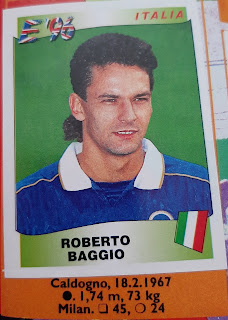322: Freddie Sears, West Ham United, Topps Match Attax Trading Card Game, Barclays Premier League 2010/11 Collector Binder
Ashton Gate. August 2009. A long ball is punted forward (this is the Championship after all). Alassane N’Diaye rises above his marker and flicks it on. A teenage striker lets it bounce before dispatching a blistering half volley into the corner past the onrushing Dean Gerken. The ball has been hit so hard it flies straight out off the stanchion. But Palace are 1-0 up and Freddie Sears has his first goal for the club. Right?
Not according to referee Rob Shoebridge and his team. After discussing briefly with his linesman Shoebridge, somehow, came to the decision that the ball hadn’t crossed the line. An understandably disconsolate Sears struggled to convert a few chances later in the game and Palace conceded in the last minute to lose 1-0. Ever the diplomats Palace’s manager and chairman, Neil Warnock and Simon Jordan, unleashed a torrent of abuse at anything that stood still long enough after the match but to no avail. The result stood and Freddie Sears failed to score in his subsequent seventeen appearances for Palace before returning to his parent club, West Ham United, in January 2010.
Sears had burst on to the scene in March 2008 when he scored the winning goal against Blackburn Rovers just five minutes after coming off the bench to make his first team debut for West Ham. Any Hammers’ fan with more than thirty seconds to spare will tell you about the club’s excellent record for bringing through young talent and Sears’ remarkable debut fitted this narrative beautifully. A modest 2008/09 season at the Boleyn Ground didn’t exactly stick to this script and Hammers’ boss Gianfranco Zola decided to send the young striker out on loan in 2009/10 in order to gain more first team experience. Palace beat QPR and Leyton Orient to the deal and Sears impressed in pre-season scoring three times. And then Bristol City happened.
Within a month of Sears’ return to West Ham he was shipped out on loan to Coventry City where injury restricted him to ten games and no goals. He was sent out on loan again shortly after the start of the 2010/11 season, this time to Scunthorpe United, where he failed to score in nine appearances before being recalled to East London to alleviate an injury crisis. On New Year’s Day of 2011 he finally scored again in an important 2-0 win for the Hammers over relegation rivals Wolverhampton Wanderers and added to his tally with a goal against Burnley in the FA Cup. However, West Ham ended the season bottom of the Premier League and relegated.
To his credit Sears stuck with the Hammers but quickly found himself on the periphery of Sam Allardyce’s side as they pushed for immediate promotion back to the top flight. Once again the striker was sent out on loan, this time to Colchester United, where he netted twice in eleven games. With his contract at West Ham expired he joined the Us permanently in the summer of 2012 and enjoyed something of a renaissance at the Essex club scoring 36 times in just over a hundred appearances across three seasons. In 2015 he moved on to Ipswich Town where he has racked up nearly 200 appearances and contributed 31 goals to a struggling side.
Had Rob Shoebridge been vaguely competent at his job would Freddie Sears have gone on to greater things? The statistics suggest probably not but the damage the incident had on his fledgling career cannot be dismissed. By the time Sears had returned to West Ham in 2010 Palace were on the verge of administration (again) and had resorted to playing Danny Butterfield, a right-back, up front. That being said he did score a hat-trick against Wolves in the FA Cup so maybe that wasn’t such a bad thing. Having a striker around might have been helpful though and had the refereeing team on that fateful day in August 2009 been anything above bloody useless then a young, hungry Freddie Sears might have been just the man for the job.





Comments
Post a Comment